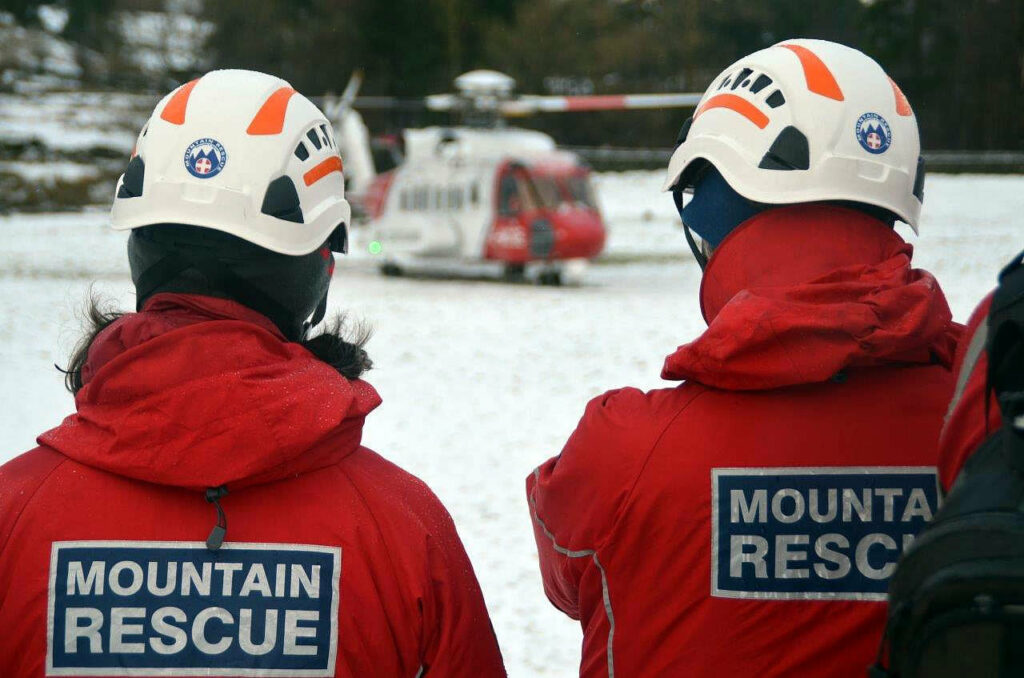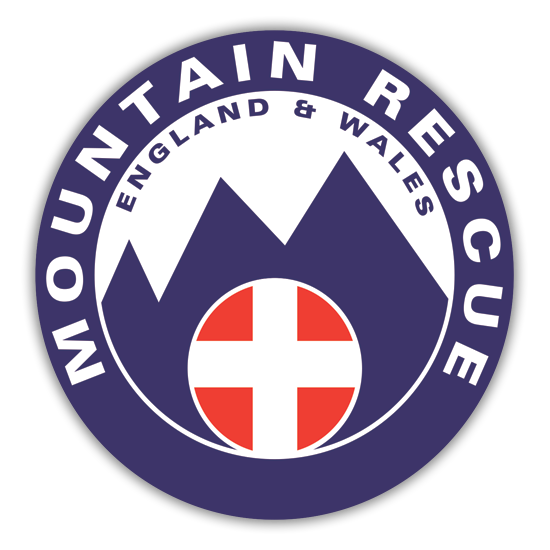In the news
Annual figures tell a mixed story across Mountain Rescue in England and Wales
January 1, 2021

Statistics from Mountain Rescue England and Wales (MREW), the umbrella organisation for Mountain Rescue teams across England and Wales, tell a mixed story for 2020.Overall, call out numbers for the year are remarkably consistent with 3080 call outs in 2020 compared with 2973 in 2019, a relatively small increase of 107 (under 4%).
But this national view hides a much more complicated story once the figures are broken down by region, especially in the months following the arrival of COVID-19 in the country.
The first three months of the year saw a small increase in call outs, up 16 on 2019 with a majority of the increase attributable to the West Country around Dartmoor and Exmoor (PENMACRA region) where there was significant flooding and in the Mid-Pennine region (MDPRO).
Quarter two, with national lockdown, saw a huge fall overall with 359 fewer call outs in April, May and June. However, while areas like the Lake District and North Wales saw significant falls, the Peak District (PDMRO) was relatively unchanged with just over 120 callouts in those three months.
Then, with a loosening of restrictions in early Summer, callouts increased by about 300 to a figure of over 1230 across England and Wales. The incident reports show that this coincided with a large increase in visitor numbers to some of the National Parks, particularly those that were close to centres of population.
“The COVID pandemic has affected everybody,” says Mike Margeson, Operations Director for MREW. “Our objective from its beginning was to protect the safety of our volunteer team members and to ensure that mountain rescue services were not compromised.”
“It is no surprise that we have seen significant extra pressures and an increase in incidents and callout figures in areas like the Peak District, the North East of England and the Mid-Pennines (which includes parts of Greater Manchester and Merseyside) with the increased public recognition of the benefits of time spent in outdoors.”
Matt Dooley is Chairman of the Peak District Mountain Rescue Organisation (PDMRO), the area most affected by an increase in callouts: “The increase can be linked directly with the easing of the first lockdown in late May,” he confirms. “During quarter three, Peak District teams were called out over 170 times, which was an unprecedented level. While some of these callouts were to what may be classed as our usual type of incident, a large number were to assist people who would not normally venture outdoors. We understand that people were attracted to the Peak District due to other locations being closed down and our proximity to major cities but it certainly put us under a lot of pressure – huge thanks and congratulations go to all the volunteers across the region who responded with such commitment.”
The Yorkshire Dales region (YDRP) saw a similar number of callouts in 2020 to 2019 (207 in 2020, 218 in 2019) but there have been other impacts from COVID-19 as Ian Hugill, Incident Controller for Scarborough and Ryedale MRT reports: “We had a similar volume and mix of incidents as in other years but everything just took that bit longer, donning full waterproofs, PPE, including masks, goggles and helmets in the middle of summer, sterilising vehicle controls and cockpits before deploying, steamed up goggles and glasses, decontamination of team members’ kit after handover and deep cleaning of equipment and vehicles on return to base. Thankfully, other than being colder than we would have liked, we don’t believe any delayed response had a negative impact for those we rescued.”
Will Close-Ash of Northumberland National Park MRT in the North East region (NESRA) saw similar impacts: “In March 2020, it was impossible to predict what impact the first lockdown would have on incidents in Northumberland and Tyne & Wear. Then, once restrictions were lifted, we didn’t know whether we’d see a sudden deluge of incidents or a steady trickle. In the end, both Northumberland National Park and North of Tyne Mountain Rescue Teams recorded more incidents and had more deployments than usual and, like the Peak and Pennines, we were significantly up on rescues in the hills as people took to the outdoors in response to their time in isolation.
“The extra precautions and the uncertainty of COVID placed added stress and pressure on our members and we have also had to face another challenge. There were huge cuts in fundraising opportunities at events and we couldn’t engage with the public in the usual way. We have had to become more creative in reaching people via online media and spreading safety messages without that face-to-face contact.”
The picture may not have been consistent across the country in 2020 but the messages as 2021 begins are very much the same wherever people are visiting upland areas to enjoy the outdoors: “#BeAdventureSmart and think about your skills, the weather and the clothing and equipment that you need,” says Mike Margeson, Operations Director of MREW. “Just a bit of planning can help to avoid many dangerous situations, add to people’s enjoyment of the hills and ensure that mountain rescue volunteers are available for the unavoidable emergencies that can happen to anyone.”
“Our teams should be proud of their dedication, team work, professionalism and resilience in 2020. They now face the challenges that winter will undoubtedly bring with fewer hours of light, challenging weather and difficult ground conditions. I hope that everyone reading this will appreciate these volunteers and take a few precautions to ensure that they’re not part of our statistics in 2021!”
Notes – the following summary of figures shows annual callout number changes. More detailed quarterly figures are available on request.
| Region | 2019* | 2020 | Change |
| Lake District (LDSAMRA) | 659 | 568 | -91 |
| Mid-Pennine (MPSRO) | 343 | 453 | +110 |
| North East (NESRA) | 217 | 320 | +103 |
| North Wales (NWMRA) | 636 | 446 | -190 |
| Region | 2019* | 2020 | Change |
| Peak District (PDMRO) | 379 | 584 | +205 |
| Peninsula South West (PENMACRA) | 167 | 222 | +55 |
| South West England (SWERA) | 49 | 22 | -27 |
| South Wales (SWARA) | 305 | 258 | -47 |
| Yorkshire Dales (YDRP) | 218 | 207 | -11 |
| TOTAL | 2973 | 3080 | +107 |
